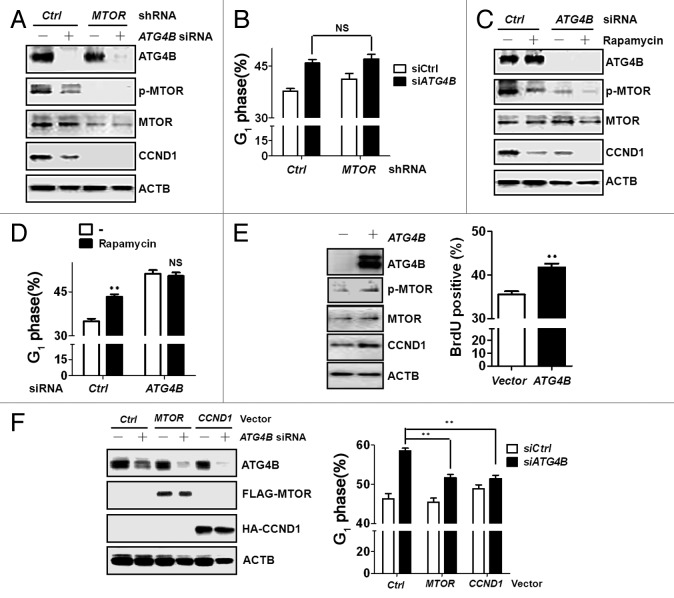Figure 6. MTOR dephosphorylation was involved in G1 phase arrest in ATG4B-silenced cells. (A) Scrambled (-) or ATG4B (+) siRNA (5 nM) was introduced into human colorectal cancer HCT116 cells stably harboring scrambled shRNA (Ctrl) or shRNA against MTOR for 72 h. MTOR phosphorylation and protein level of MTOR, CCND1, and ATG4B were subsequently determined by immunoblotting. (B) The proportion of G1 phase for cells as (A) was analyzed by flow cytometry. (C) Scrambled (-) or ATG4B (+) siRNA was transfected into human colorectal cancer HCT116 cells for 56 h, followed by treatment with rapamycin (0.2 μM) for 16 h prior to harvesting. The cells were harvested for immunoblotting or (D) assessment of the proportion in the G1 phase. (E) HCT116 cells were transfected with a vector expressing cherry or cherry tagged ATG4B for immunoblotting (left panel) or BrdU staining (right panel). The percentage of BrdU-positive cells in cherry-expressing cells was quantitated with FlowJo. (F) The cells were transfected with scrambled or siRNA against ATG4B for 48 h, followed by transfection of MTOR or CCND1 expression vectors for 24 h. The cells were harvested for immunoblotting (left panel) or cell cycle analysis. The results are expressed as the mean ± SEM from 3 individual experiments. NS: not significant.

An official website of the United States government
Here's how you know
Official websites use .gov
A
.gov website belongs to an official
government organization in the United States.
Secure .gov websites use HTTPS
A lock (
) or https:// means you've safely
connected to the .gov website. Share sensitive
information only on official, secure websites.
